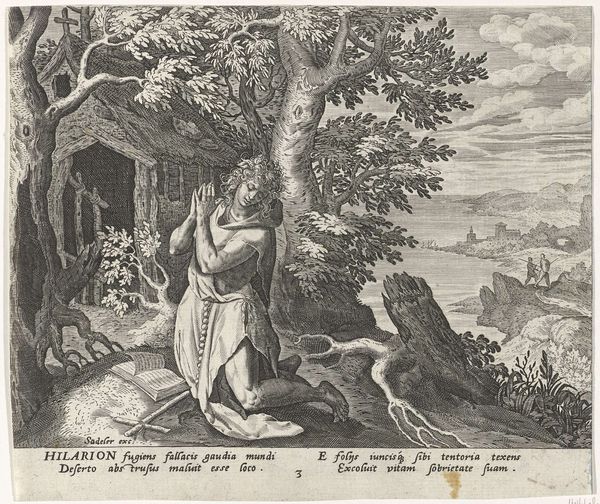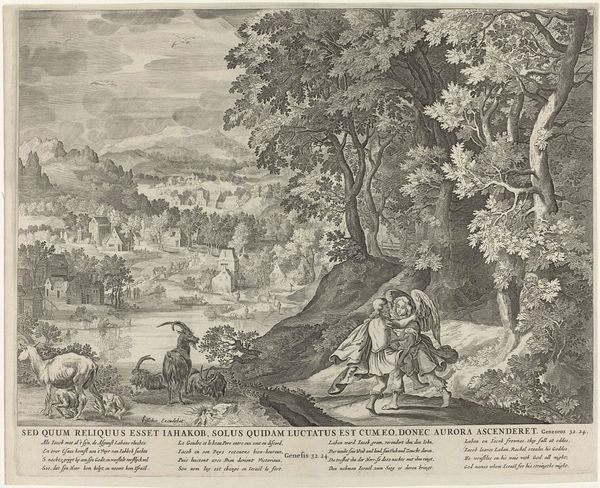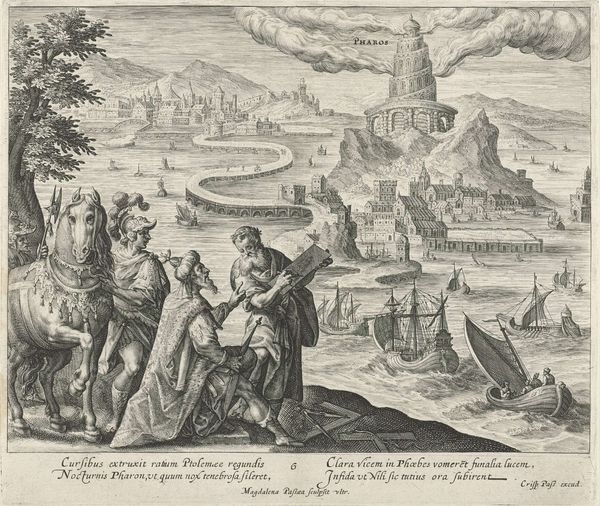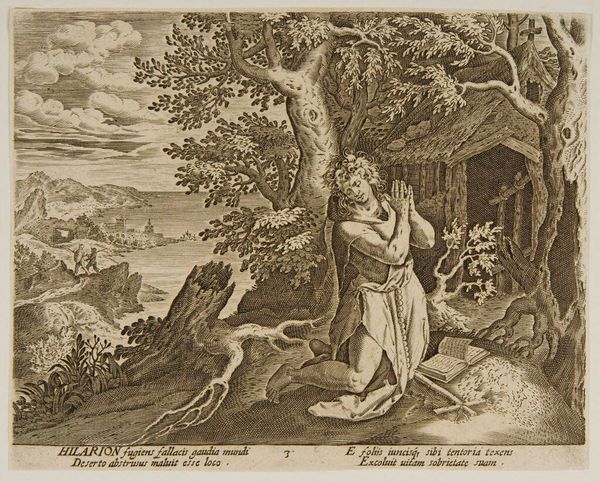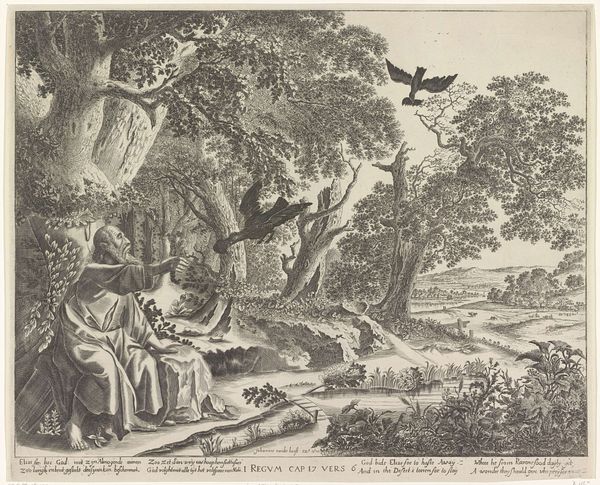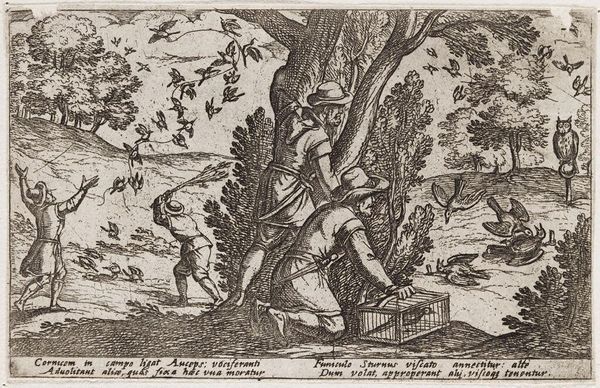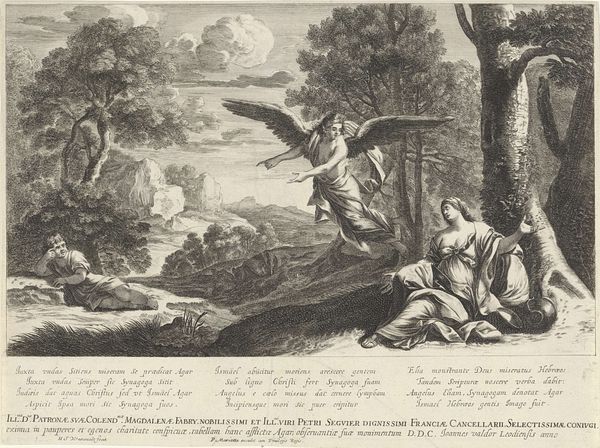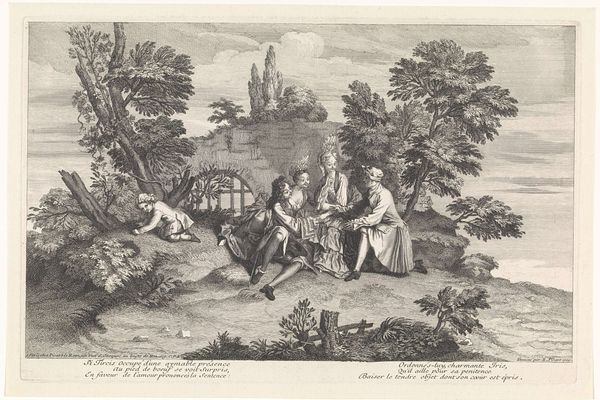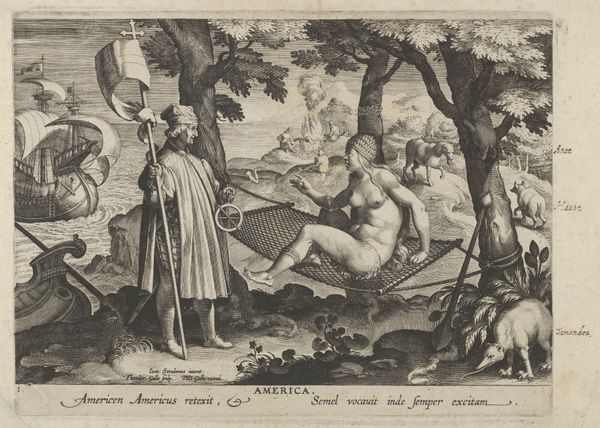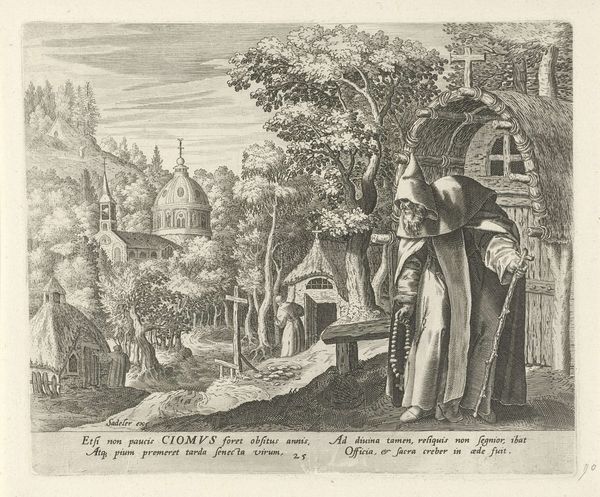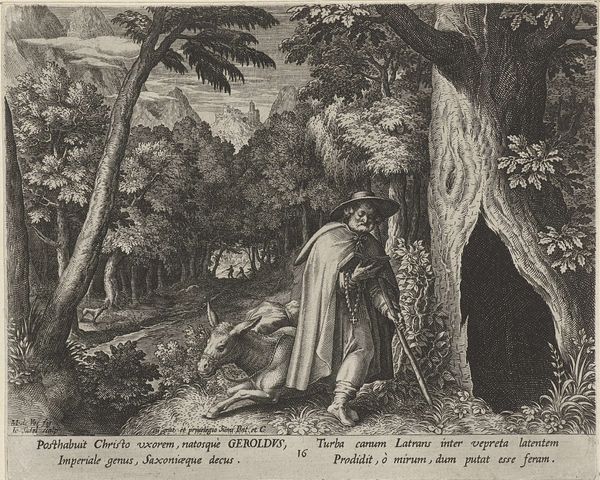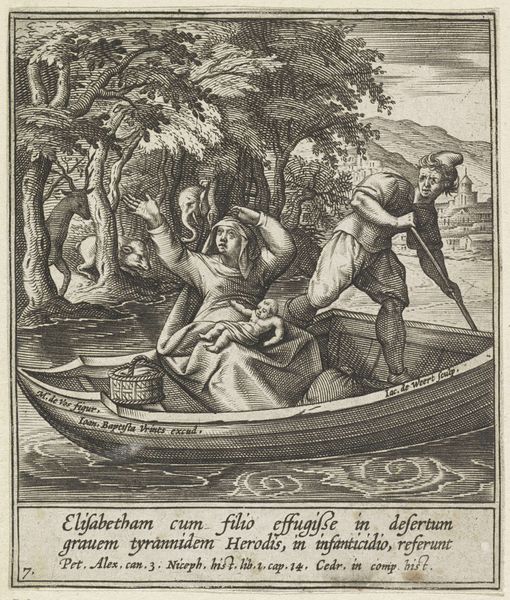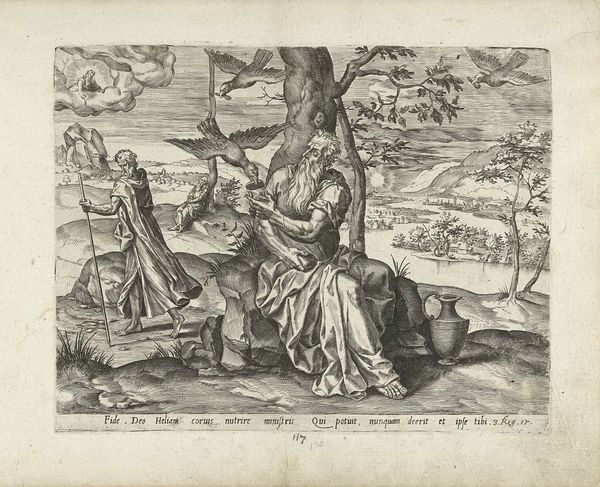
print, etching
#
narrative-art
# print
#
etching
#
landscape
#
mannerism
#
figuration
#
history-painting
Dimensions: height 165 mm, width 199 mm
Copyright: Rijks Museum: Open Domain
Curator: Look at this etching, "Mutius de kluizenaar," created between 1583 and 1588 by Johann Sadeler I. It’s currently housed here at the Rijksmuseum. Editor: It has an eerie quality, don’t you think? The light and shadow are so intense, and this gaunt figure in the landscape evokes a strong feeling of isolation and even… despair? Curator: Yes, and it embodies Mannerism through its exaggerated figures and theatrical compositions. Observe how the figure, presumably Mutius, occupies the liminal space between the wild woods and the beckoning town, perhaps symbolizing his internal struggle. He is caught between seclusion and his obligations. Editor: It's curious that Sadeler chose etching—the sharp, linear quality emphasizes every wrinkle and vein on Mutius. Look at the twisted trees mirroring the old man's physical struggles. What do we know about the context surrounding this piece? Curator: We find textual information on the plate that reads "Mutius, excelling in virtue, leaves the desert...He often hastened to his brothers to take a step... He soothed the weak and feeble bodies. He consecrated his sacred life, and buried the fatherless." Sadeler was renowned for his skill in depicting allegorical scenes laden with religious and moral teachings, perfectly encapsulated in his landscapes, often portraying hermits as exemplars of steadfast Christian virtue. Editor: Right, but how subversive is he being? Mannerism loved that sense of controlled tension, that feeling of being slightly *off*. Sadeler doesn’t shy away from showing us a really physically diminished man, someone wrestling with leaving behind, possibly, what kept him alive. And there is something very humanizing about it. Curator: Indeed, perhaps the emotional vulnerability displayed here is not just a symptom of its style but also a conscious move to depict the frailty of flesh against the fortitude of the spirit. It's like Sadeler’s acknowledging the immense sacrifice such a solitary life entails. Editor: Makes you wonder about your own life choices, doesn't it? Pondering the value of solace versus societal life when confronted with art always tickles something deep inside. Curator: Yes. Indeed a poignant contemplation for our audience, urging introspection beyond surface-level appreciation.
Comments
No comments
Be the first to comment and join the conversation on the ultimate creative platform.
